So I purchased a house that has a pool. First time pool owner. it is an older pool. we heated it and today had our first swim. From the perspective of inside the pool, I can see that tiles around the top are badly deteriorated and missing grout. I realize that at some point I probably need to have the entire pool refaced. However, that cannot happen this year.
I am somewhat handy and have grouted tiles in bathrooms and kitchens before. I really don’t know if I am qualified to handle fixing these tiles around the pool and hoping someone can give advice.
Is it a job only for professionals? What are some of the differences in grouting pool tiles? Is it a special type of Epoxy grout? Do you have to grind out the old grout with an angle grinder and replace with new? Or can you just touch up? Any advice on how to keep dust and broken grout from falling into the pool or is that just part of the job, getting the debris out of the water?
As you can see from the pictures, the previous owners did some strange things and left grout on top of the tiles, and looks like at one point even tried to use silicone in place of the grout. i’m curious if anybody has any advice on how to get excess grout off the top of the tiles. I took some pictures of the worst areas. it seems like all the tiles below the waterline are in good condition. it is the ones above the waterline and where it meets the curbing that have bad problems. there are a few areas where tiles are completely missing. is there a special type of mortar used to put new tiles in?
Any help would be appreciated. This is all new to me. See the pictures. Any descriptions of the process of repairing tiles would be great and any special tools recommended.
I am somewhat handy and have grouted tiles in bathrooms and kitchens before. I really don’t know if I am qualified to handle fixing these tiles around the pool and hoping someone can give advice.
Is it a job only for professionals? What are some of the differences in grouting pool tiles? Is it a special type of Epoxy grout? Do you have to grind out the old grout with an angle grinder and replace with new? Or can you just touch up? Any advice on how to keep dust and broken grout from falling into the pool or is that just part of the job, getting the debris out of the water?
As you can see from the pictures, the previous owners did some strange things and left grout on top of the tiles, and looks like at one point even tried to use silicone in place of the grout. i’m curious if anybody has any advice on how to get excess grout off the top of the tiles. I took some pictures of the worst areas. it seems like all the tiles below the waterline are in good condition. it is the ones above the waterline and where it meets the curbing that have bad problems. there are a few areas where tiles are completely missing. is there a special type of mortar used to put new tiles in?
Any help would be appreciated. This is all new to me. See the pictures. Any descriptions of the process of repairing tiles would be great and any special tools recommended.
Attachments
-
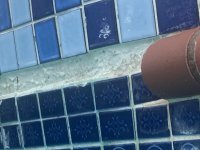 3E878748-2339-411D-B94E-2FA4E93164BD.jpeg270.2 KB · Views: 11
3E878748-2339-411D-B94E-2FA4E93164BD.jpeg270.2 KB · Views: 11 -
 236BF149-0DC6-492E-9BD4-8E575D3D1A38.jpeg317.6 KB · Views: 12
236BF149-0DC6-492E-9BD4-8E575D3D1A38.jpeg317.6 KB · Views: 12 -
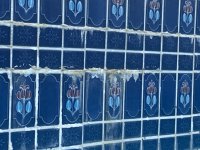 D09E9618-5B27-4DFA-8375-EEA27793D6C3.jpeg367.5 KB · Views: 16
D09E9618-5B27-4DFA-8375-EEA27793D6C3.jpeg367.5 KB · Views: 16 -
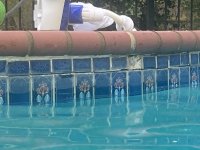 DA6EEDD6-EE38-490D-8336-9F254C227AB1.jpeg316.1 KB · Views: 14
DA6EEDD6-EE38-490D-8336-9F254C227AB1.jpeg316.1 KB · Views: 14 -
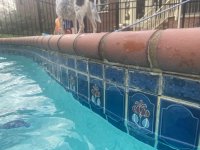 7B39D080-B87F-4B97-910E-E327A42F617E.jpeg361.4 KB · Views: 14
7B39D080-B87F-4B97-910E-E327A42F617E.jpeg361.4 KB · Views: 14 -
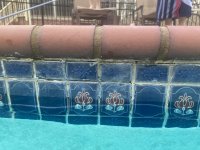 FA2B4A4B-BB6B-4DA1-B72F-85924A5C20B1.jpeg455.7 KB · Views: 12
FA2B4A4B-BB6B-4DA1-B72F-85924A5C20B1.jpeg455.7 KB · Views: 12


